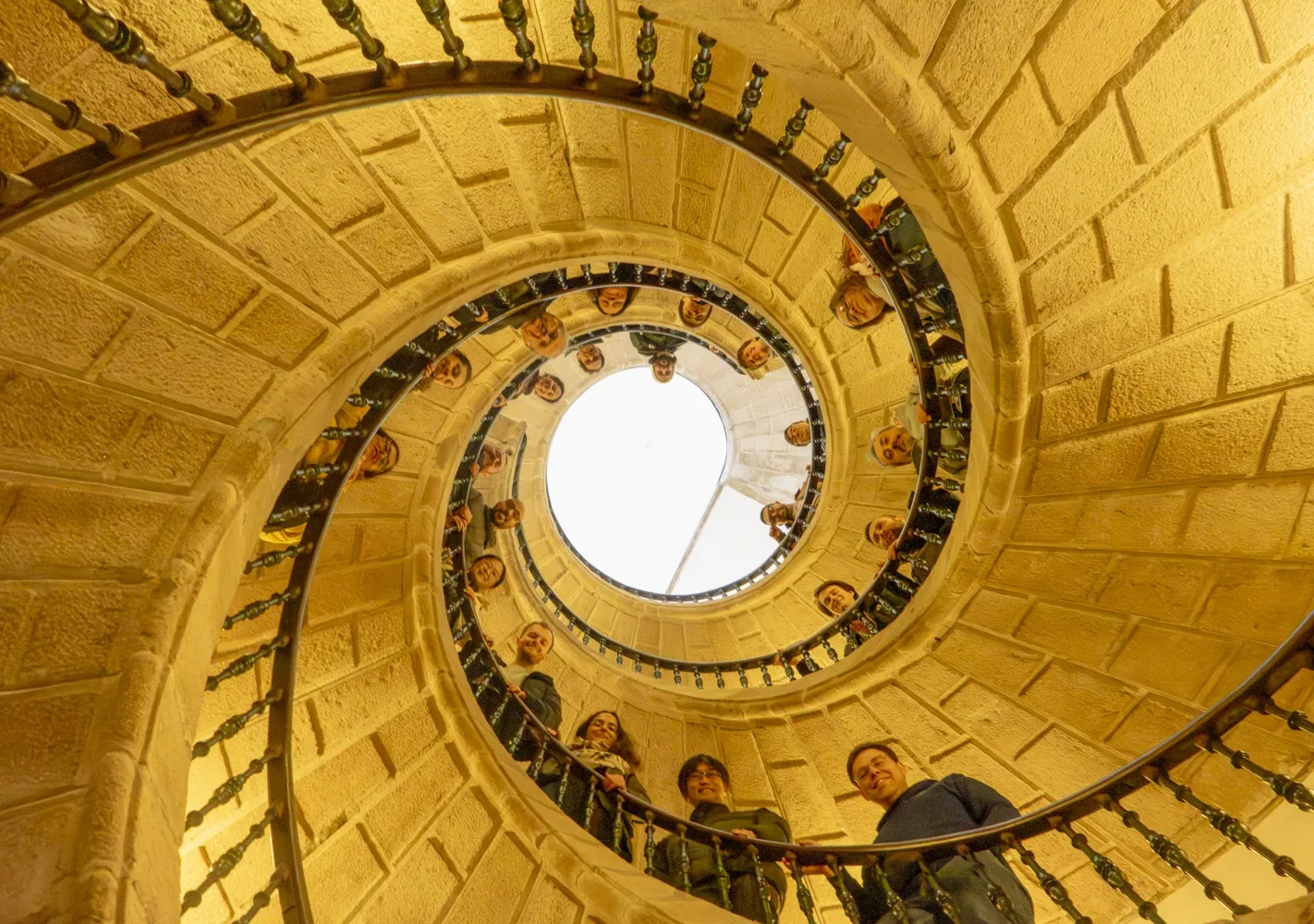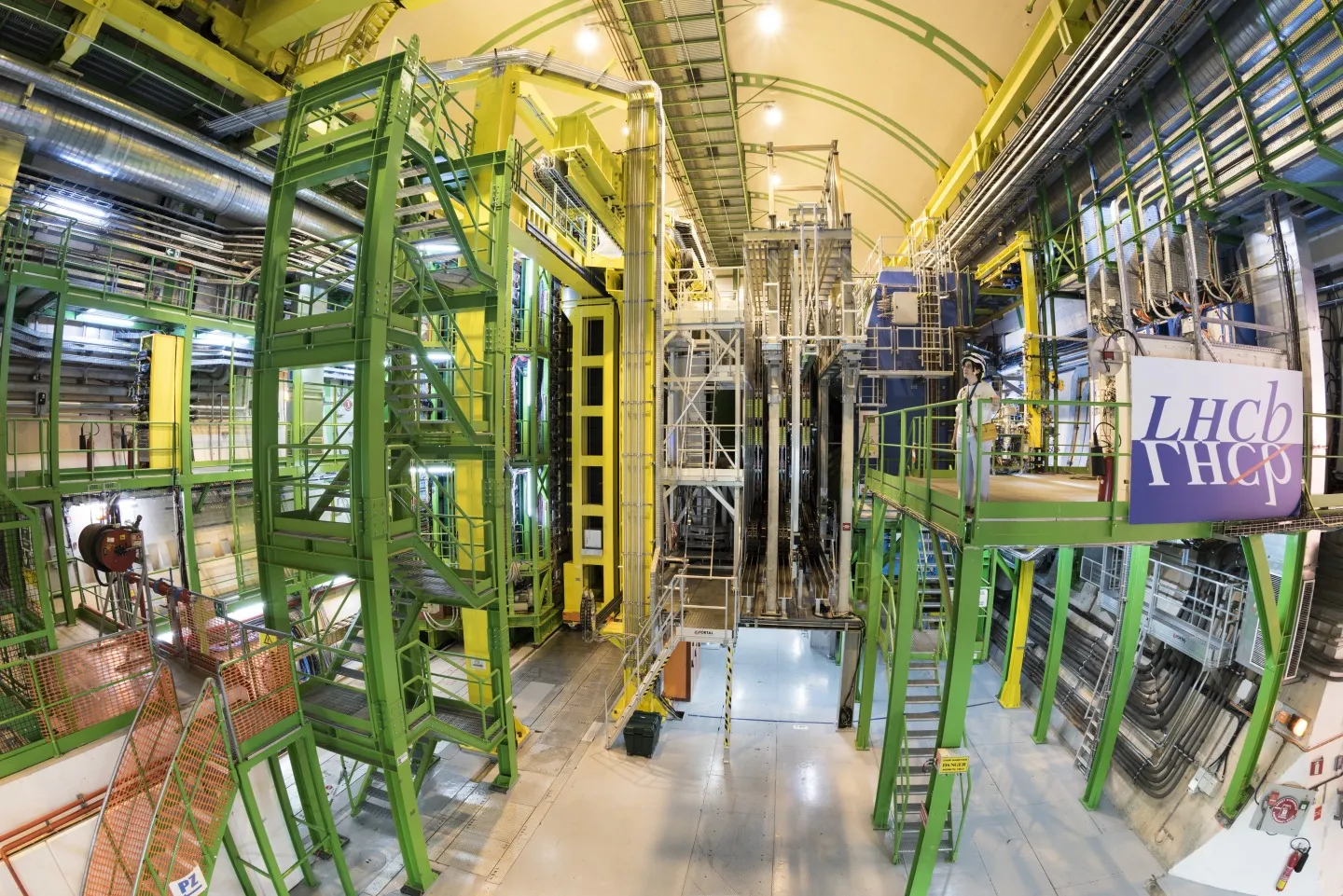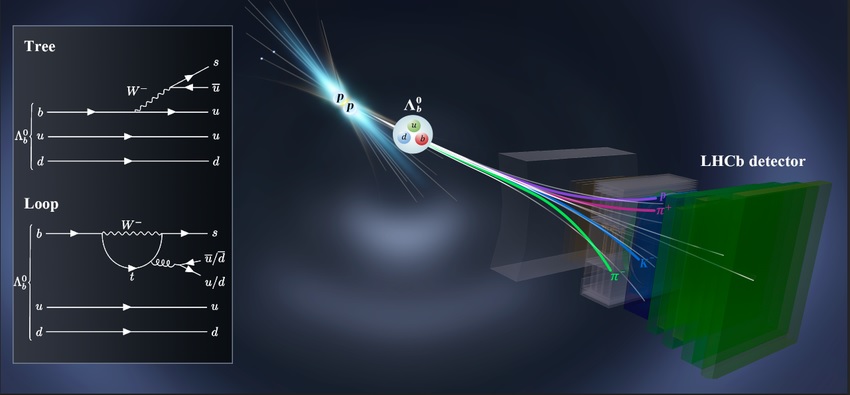IGFAE hosts an international meeting on the development of solenoidal spectrometers



16.07.2025

Nature, one of the world’s leading scientific publications, today publishes a fundamental discovery for understanding the dominance of matter over antimatter since the origins of the universe. The article, authored by the team behind CERN’s LHCb experiment—including researchers from the Instituto Galego de Física de Altas Enerxías (IGFAE), a joint center of the University of Santiago de Compostela (USC) and the Xunta (regional government) of Galicia—opens a new path toward physics beyond the Standard Model, the most complete scientific construction so far for explaining the known universe and its elementary components.
After analyzing an enormous amount of collision data produced by the Large Hadron Collider (LHC), the LHCb collaboration has obtained the first solid evidence of a fundamental asymmetry in the decay of baryons (particles made up of three quarks, such as protons and neutrons, which form atomic nuclei). Earlier hints of this phenomenon were seen in 2017 and 2019, but have now been confirmed with much greater statistical certainty, according to today’s publication in Nature, which was already previewed in March this year at the Rencontres de Moriond conference.
This asymmetry, known as charge-parity (CP) violation, is one of the key phenomena that could help explain why matter has prevailed over antimatter since the beginning of the universe. “The Standard Model of particle physics is one of the most successful frameworks in physics. However, it cannot explain certain natural phenomena—such as the fact that the known universe is completely dominated by matter—which suggests that some ingredients are still missing from the model,” explains María Vieites Díaz, deputy physics coordinator of the LHCb collaboration and Ramón y Cajal researcher at IGFAE and USC.
CP violation had previously been observed in mesons (particles made up of a quark-antiquark pair, mediators of the strong interaction), but not in baryons. That earlier discovery, achieved in 1964, earned the 1980 Nobel Prize in Physics for its discoverers, James Cronin and Val L. Fitch. “Findings like these, which examine differences in behavior between matter and antimatter, are new pieces of the puzzle that help us test the predictions of the Standard Model in one of its weakest areas,” adds María Vieites.

Illustration of the decay of the beauty-lambda baryon (Λb), the particle in which the asymmetry was detected by the LHCb detector. Credit: LHCb / CERN.
In this case, CP violation was observed in a heavier and short-lived relative of protons and neutrons, known as the beauty-lambda baryon (Λb), which consists of an up quark, a down quark, and a beauty (or bottom) quark. “This new result is the outcome of highly efficient data-taking between 2011 and 2018, followed by a very detailed analysis, which allowed for precise measurement of these differences between matter and antimatter, yielding a very clear signal in a new system—baryonic matter—for the first time,” highlights Vieites Díaz.
“The reason it has taken longer to observe CP violation in baryons than in mesons is due to the small size of the effect and the large amount of data required,” explains Vincenzo Vagnoni, spokesperson for the LHCb collaboration. “We needed a machine like the LHC, capable of producing enough ‘beauty’ baryons and their antimatter counterparts, along with an experiment precise enough to identify the products of their decay. It took over 80,000 baryon decays to observe this asymmetry for the first time,” Vagnoni emphasizes.
Despite today’s milestone, many questions remain unanswered. The magnitude of CP violation predicted by the Standard Model is not sufficient to explain the observed imbalance between matter and antimatter. This suggests that additional sources of CP violation, beyond those currently described by the model, may exist and remain undiscovered. Searching for them is a major component of the LHC’s scientific agenda and will continue in future particle colliders.
“The more systems in which we observe CP violation—and the more precise our measurements—the greater our chances of testing the Standard Model and uncovering new physics beyond it,” says Vagnoni. This represents one of the main challenges, now and in the future, for the LHCb collaboration.“Work continues to carry out these measurements using other baryons and final states, both with data from earlier periods and with the data currently being collected during the phase known as LHC Run 3,” concludes María Vieites.
The Instituto Galego de Física de Altas Enerxías is one of the founding members of the LHCb experiment at CERN, which currently includes nearly 1,800 people from more than 100 research centers across 24 countries. With close to 40 members involved in the collaboration, IGFAE currently represents the largest Spanish team in LHCb, holding positions of significant responsibility.
In addition to experimental work, IGFAE personnel maintain a close theoretical collaboration with CERN, in areas such as quantum chromodynamics, neutrinos, and nuclear physics. The institute is also actively involved in discussion groups on CERN’s future accelerators.
IGFAE is a research center established in 1999 by the University of Santiago de Compostela and the Xunta de Galicia. Its mission is to coordinate and promote scientific and technical research in High Energy, Particle, and Nuclear Physics, as well as in related fields such as Astrophysics, Medical Physics, and Instrumentation. The institute hosts around 140 members involved in major experimental facilities such as CERN, the Pierre Auger Observatory, LIGO, and GSI/FAIR, among others.
The IGFAE has been accredited as a María de Maeztu Unit of Excellence by the Spanish Government’s State Research Agency. It is also part of the CIGUS network of the Regional Government of Galicia, which accredits the quality and impact of its research. The center is co-financed by the European Union through the Galicia Feder 2021-2027 Program.